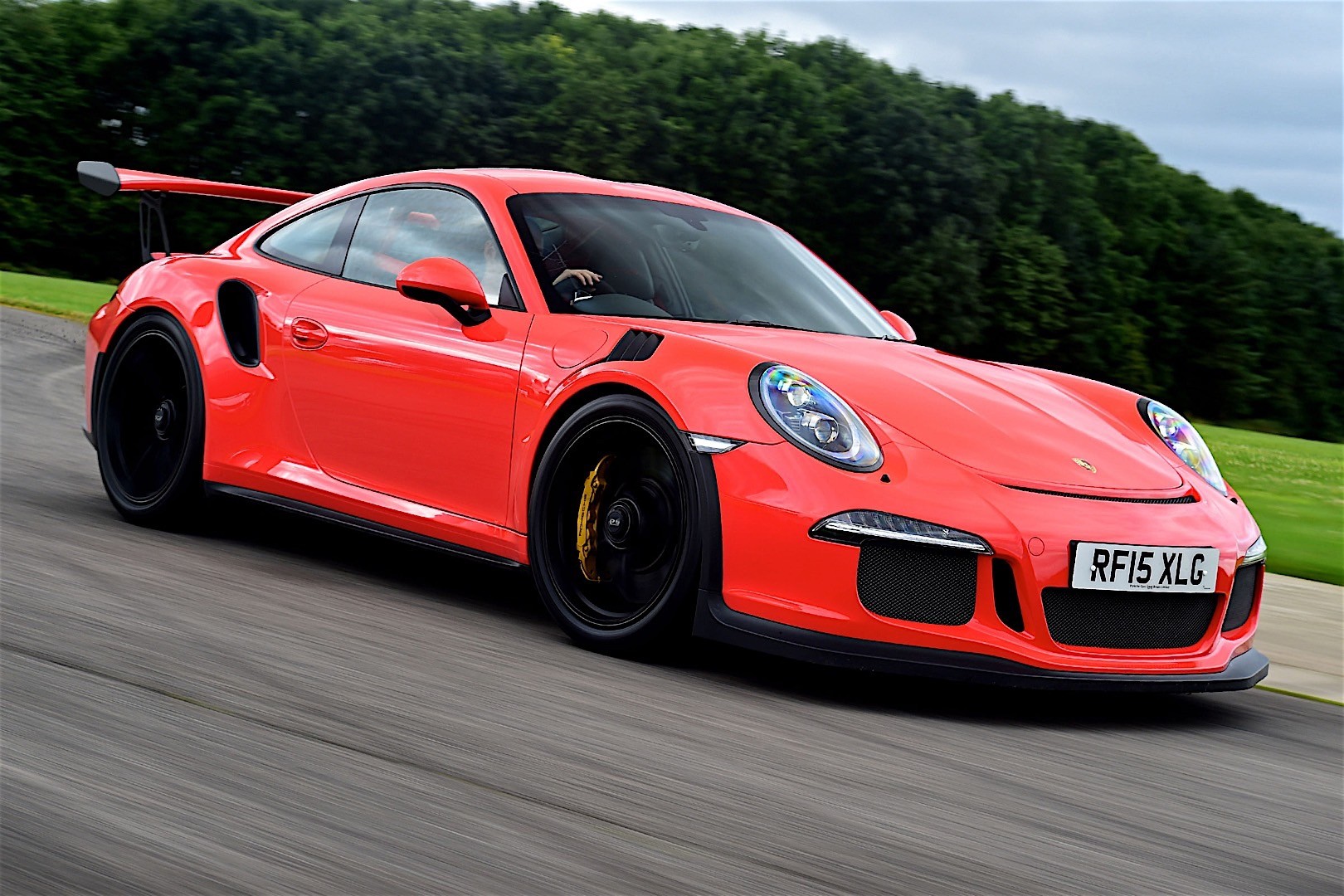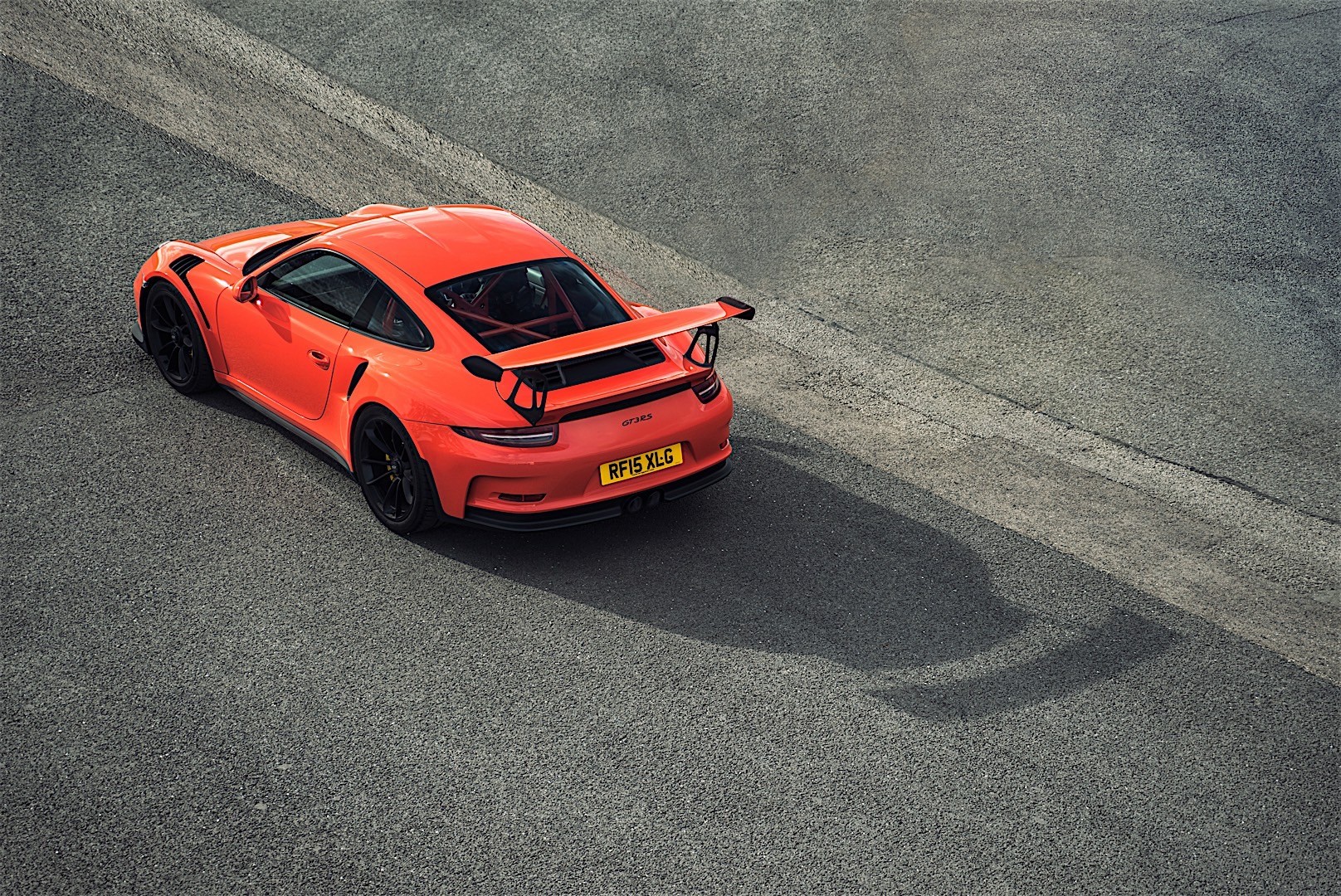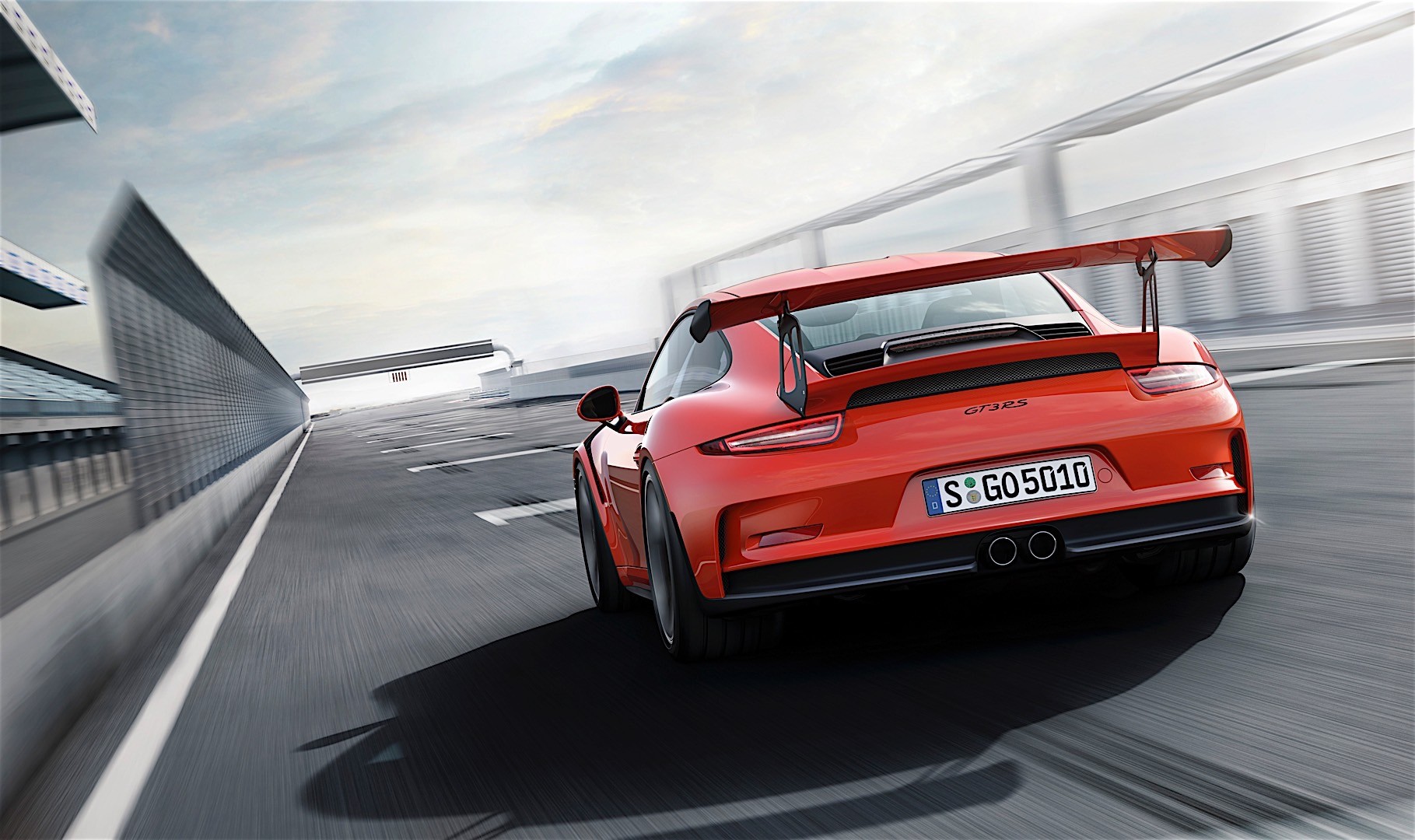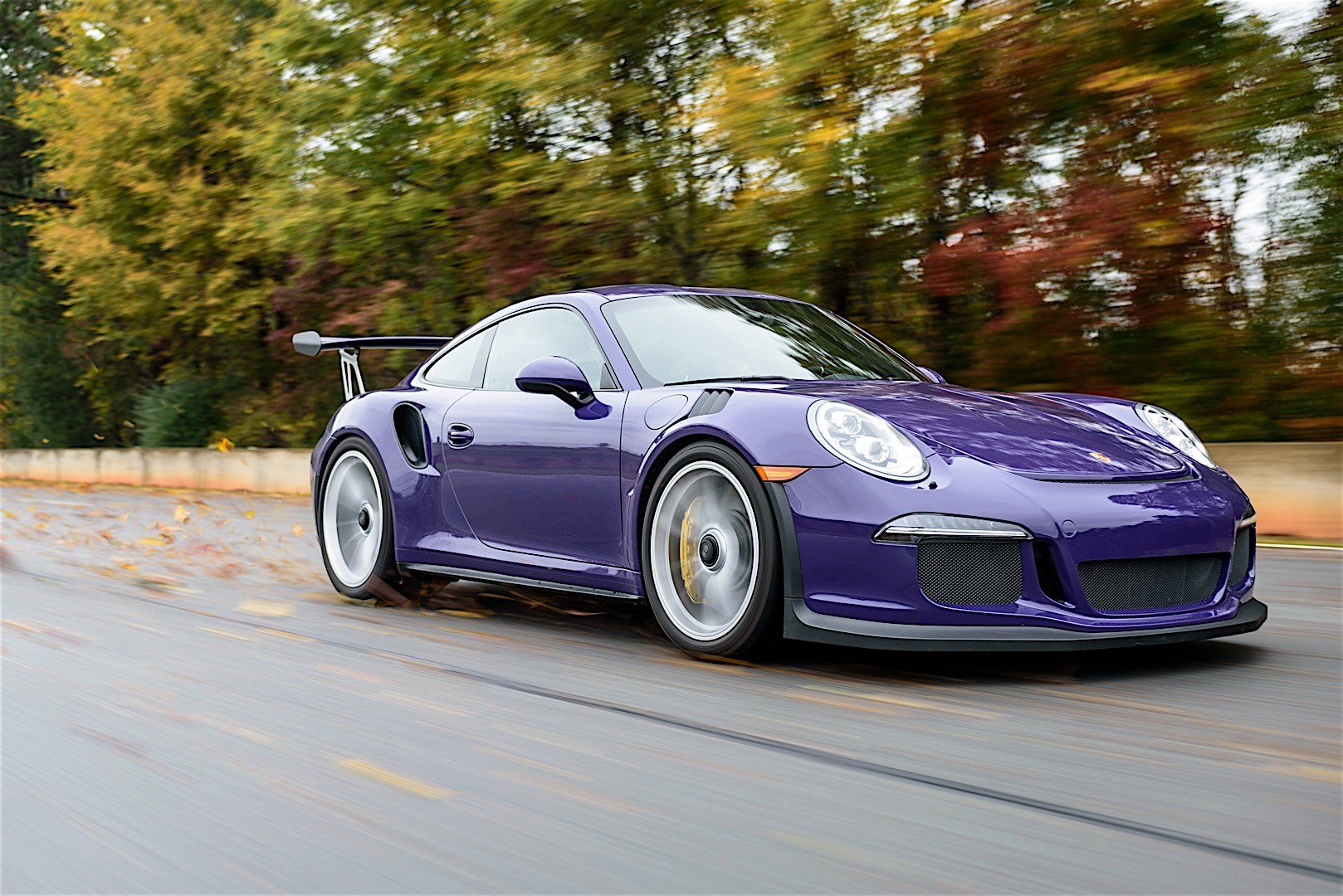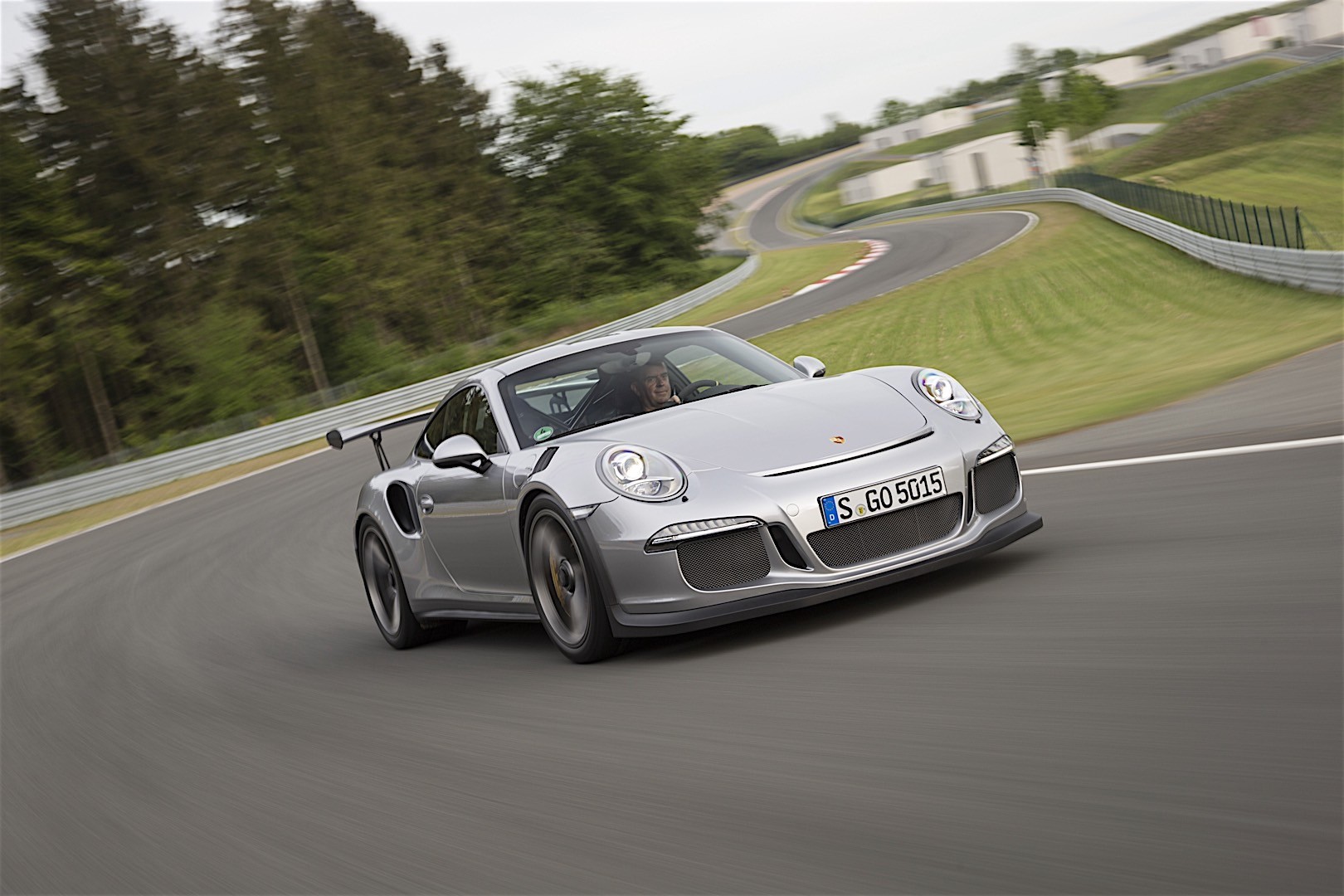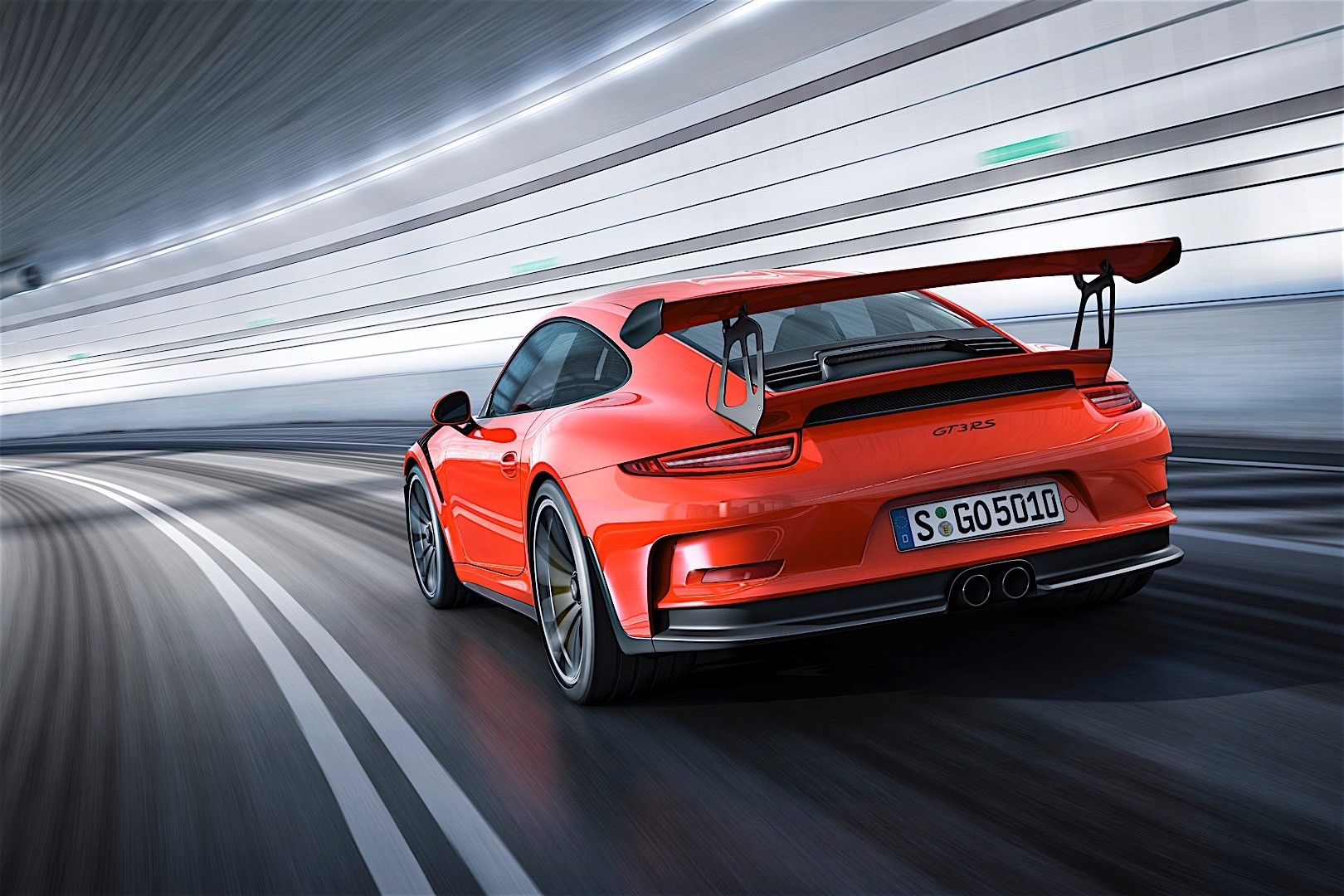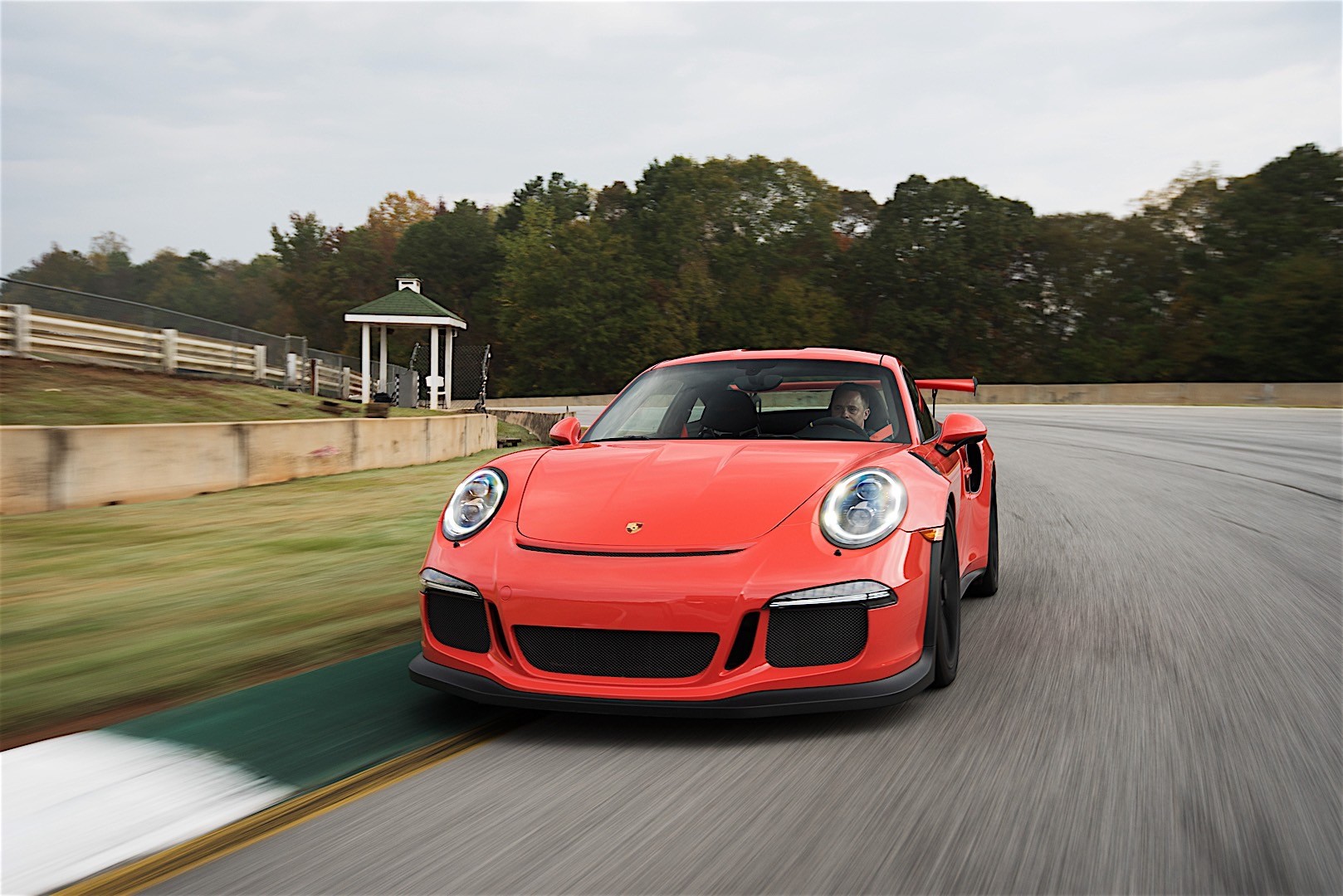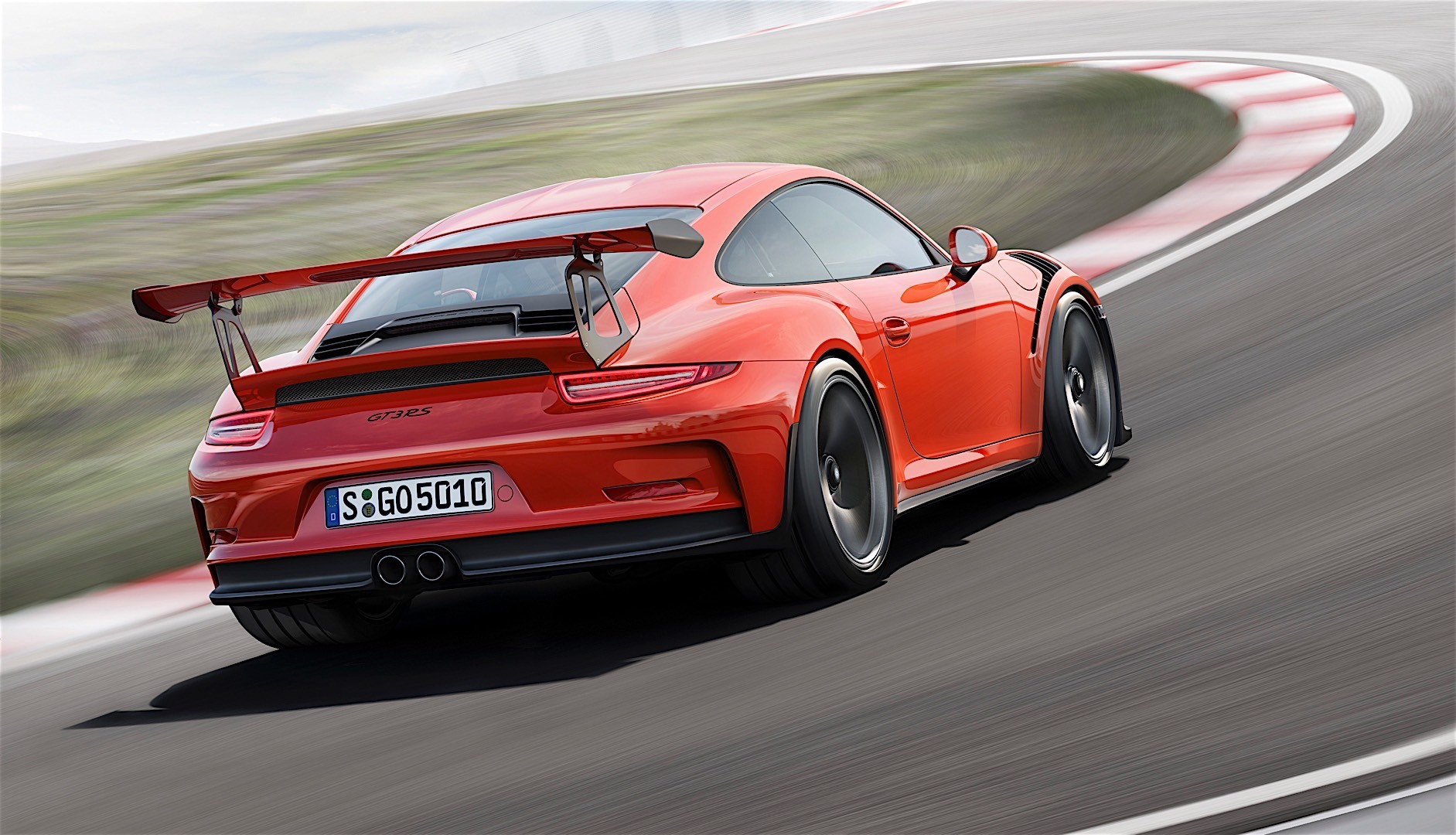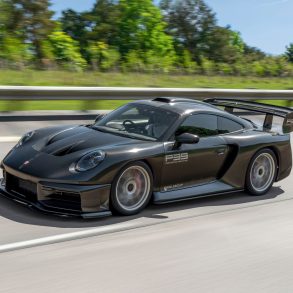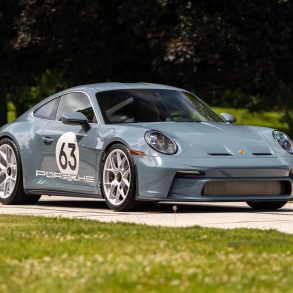(2015 – 2016) Porsche 911 GT3 RS (991) – Ultimate Guide
The new Porsche 911 GT3 RS, which is announced today, once again blurs the boundary between road-going sports cars and race cars. It is equipped with the maximum degree of motorsport technology currently possible in a street-legal 911, yet retains supreme suitability for everyday driving.
Extensive modifications to the drive system, aerodynamics and lightweight design enhance performance beyond that of even the 911 GT3. Indeed, the RS has set a lap time around the 14 mile Nürburgring Nordschleife of 7 min 20 secs; an achievement which also trumps the historic record value of the Carrera GT super sports car of just under 7 min and 29 secs. As a consequence, this clearly qualifies the 911 GT3 RS as the benchmark in its class – directly at its launch.
As befits the tradition at Porsche, motorsport expertise is the reason for this superior performance. The 911 GT3 RS is powered by a 4.0-litre six-cylinder engine with 500 hp (368 kW) of power and 460 Newton metres of torque, combined with a specially developed PDK transmission. The engine, which has the largest displacement and most power of any naturally-aspirated power unit with direct fuel injection in the 911 family, accelerates the high-performance sports car from 0 to 62 mph in 3.3 seconds and on to 124 mph (200 km/h) in 10.9 seconds. Combined NEDC fuel consumption is 22.2 mpg.
Functions such as de-clutching by the ‘paddle neutral’ facility – which is comparable to depressing the clutch with a conventional manual gearbox – and speed limiting by the ‘Pit Speed’ centre console button have been customised for motorsport use. These features give drivers more freedom in terms of exploiting the driving dynamics, while also providing them with more assistance when driving on a race circuit.
Henry Cathpole: Breathtakingly exciting and the most communicative 991 yet, the latest GT3 RS is a triumph
The 911 GT3 RS is also a masterpiece of intelligent lightweight design. For the first time, the roof panel is made of magnesium; carbon fibre is used for the engine and luggage compartment lids, and other lightweight components are made of alternative materials. This makes the RS model around 10 kg lighter than the 911 GT3. In addition, the lightweight roof lowers the sports car’s centre of gravity which improves its excellent lateral dynamic responses. The distinctive, wide-arched bodyshell is derived from the 911 Turbo, and it signifies its status as a race track-oriented driving machine with a number of RS-specific aerodynamic add-on components. The front spoiler lip, which extends nearly to the road, and the large rear wing, reinforce its dominant look.
The front luggage compartment lid features a unique contoured surface structure, a strip-like 30 cm wide recess which runs upwards through the middle of the CFRP bonnet and the magnesium roof. This styling cue is reminiscent of the similar feature that was a tradition on the front lid of classic 911 models with air-cooled engines; today, it identifies the two largest lightweight components of the 911 GT3 RS.
Autoexpress: With lots of torque on offer it’s also incredibly flexible. Short shift using the super snappy and smooth seven-speed PDK dual-clutch gearshift and you can still make rapid progress thanks to the almost imperceptible changes. Keep your foot to the floor and with launch control the RS will officially sprint from 0-62mph in 3.3 seconds, romping on to a top speed of 193mph.
Another striking characteristic are the unique front wheel arch air vents that extend into the upper section of the wings – just like a pure-bred race car. Again, as is traditional at Porsche, form follows function and this feature increases downforce on the front axle. The chassis of the 911 GT3 RS has been tuned for maximum driving dynamics and precision. Rear-axle steering and Porsche Torque Vectoring Plus with fully variable rear limited slip differential increase agility and dynamics, and the wider front and rear track widths enable even higher roll stability than in the 911 GT3.
In addition, the 911 GT3 RS features the widest tyres of any 911 model as standard. The result: even more agile turn-in characteristics and even higher cornering speeds.
The interior design of the 911 GT3 RS with Alcantara elements is based on the current 911 GT3. Another key feature are the sports seats, which are now based on the carbonfibre ‘bucket’ seats of the 918 Spyder super sports car. Other standard features are the Club Sport Package with a bolted-in roll cage behind the front seats, preparation for a battery master switch, and a separately provided six-point safety harness for the driver and fire extinguisher with mounting bracket.
The optional Sport Chrono Package features – in addition to its integrated timers – the Porsche Track Precision app for a smartphone. The Track Precision app can be used to have lap times automatically measured via GPS, and to log data on a smartphone for many driving parameters such as vehicle speed, lateral acceleration as well as acceleration and deceleration in the driving direction. It manages this data and lets the driver share and compare it with other drivers.
Standard equipment includes bi-Xenon headlights, sports exhaust, dynamic engine mounts, Alcantara interior trim, sports bucket seats, 20-inch diameter front and 21-inch diameter rear centre-lock forged alloy wheels, Porsche Active Suspension Management (PASM), Porsche Torque Vectoring Plus (PTV) with rear limited slip differential, CDR audio system with 7-inch colour touchscreen, universal audio interface offering MP3 connectivity, automatic climate control, Porsche Stability Management (PSM), Porsche Vehicle Tracking anti-theft system, three-year warranty and three-year roadside assistance package.
In-Depth
The RS has been mostly a cosmetic evolution of the non-RS GT3 already since the 996 generation and that is the case also with the 991 GT3 RS 4.0. The purpose of the front fender air vents is to give more downforce to the front axle, but no such vents have been used on the 991 GT3 Cup or RSR, so they are probably more show than go. The side air openings (with their initial purpose of cooling the intercoolers in the turbo-engined car) are used for the intake air. For its 1.4″/36 mm wider body, 2″/50 mm wider track at front, 1.2″/30 mm wider track at rear, larger wheels (0.5″ wider front and rear, 1″ larger diameter at rear) and standard roll cage, the RS has only slightly more power to compensate all that. The gear ratios of the RS have been chosen more for the race track use instead of top speed and that is the reason the RS accelerates better than the standard GT3. The gear ratios and less aerodynamic body mean the top speed of the RS is slower than that of the regular GT3 with less power.
The wheels and tyres measure exactly the same as on the 918 Spyder: fronts are 9.5×20″ with 265/35 tyres and rears 12.5×21″ with 325/30 tyres. Such a selection for the wheels for the RS is not for its benefit as all Porsche racing cars use 18″ wheels to keep the weight down and have the best braking performance. The front lid, front wings and rear lid are made of CFRP (carbon fibre reinforced plastic) and the roof is constructed using magnesium.
At the beginning of time ‘RS’ standed for ‘Rennsport’ which means ‘racing’ in German. The ‘RS’ in the Porsche name used to mean it was a street legal racing car. Think of a 991 GT3 Cup with minimal equipment to make it street legal. That is not the case with the 991 GT3 RS. Like the 991 Turbo and the 991 GT3, the ‘RS’ is full of stuff that is not put into real racing cars.
Technical specification and comparison
| Modification | 2018 911 991.2 GT3 RS 4.0 | 2015 911 991.1 GT3 RS 4.0 |
2017 911 991.2 GT3 4.0
|
2013 911 991.1 GT3 3.8 |
2011 911 997 GT3 RS 4.0
|
|
| kW | 383 | 368 | 368 | 350 | 368 | |
| lb-ft | 346 | 338 | 338 | 324 | 338 | |
| Nm | 470 | 460 | 460 | 440 | 460 | |
| Gearbox | PDK 7-speed | PDK 7-speed | PDK 7-speed | manual 6-speed | PDK 7-speed | manual 6-speed |
| 60 mph | 3.1 sec. | 3.2 sec. | 3.2 sec. | 3.8 sec. | 3.3 sec. | 3.8 sec. |
| 100 km/h | 3.2 sec. | 3.3 sec. | 3.4 sec. | 3.9 sec. | 3.5 sec. | 3.9 sec. |
| 100 mph | 6.9 sec. | 7.1 sec. | 7.3 sec. | 7.6 sec. | 7.5 sec. | |
| 200 km/h | 10.9 sec. | 11.0 sec. | 11.4 sec. | 11.4 sec. | 11.9 sec. | |
| mph | 194 | 193 | 198 | 199 | 196 | 193 |
| km/h | 312 | 310 | 318 | 320 | 315 | 310 |
| kg | 1430 | 1420 | 1430 | 1413 | 1430 | 1360 |
| lb | 3153 | 3130 | 3153 | 3115 | 3153 | 2998 |
| W/lb | 121 | 118 | 117 | 118 | 111 | 123 |
| W/kg | 268 | 259 | 257 | 260 | 245 | 271 |
| Nordschleife | 6:56,4 (Michelin Cup 2 R) | 7:20 (Michelin Cup 2) |
7:12.7 (not stock)
|
7:25 | 7:27 |
Comparison with the racing car
| 991 GT3 Cup | 991 GT3 RS | |
| Gearbox | 6-speed sequential | 7-speed PDK |
| Brake discs front / rear | 380 mm / 380 mm |
380 mm / 380 mm
|
| Wheels, front | 10.5×18 | 9.5×20 |
| Wheels, rear | 12.0×18 | 12.5×21 |
| Rear-wheel-steering | No | Standard |
| Porsche Torque Vectoring | No | Standard |
| PASM electronic damping control | No | Standard |
| Fuel tank | 100 L | 64 L |
| Weight | 1175 kg / 2590 lb |
1420 kg / 3130 lb
|
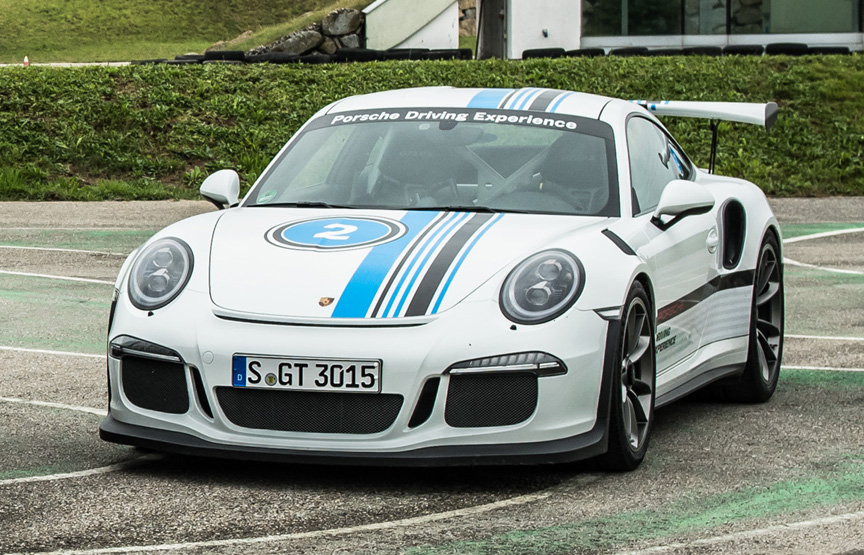


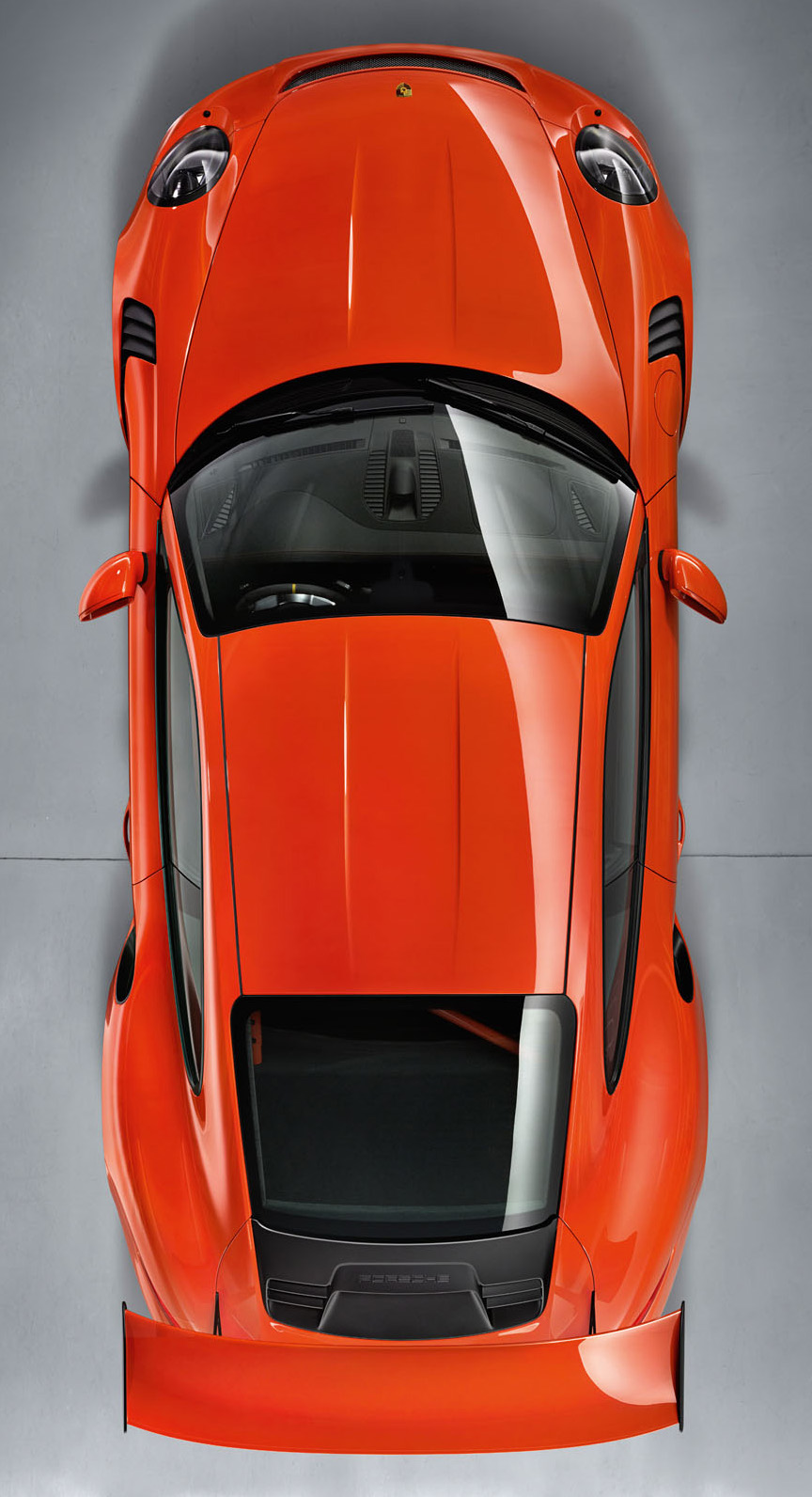

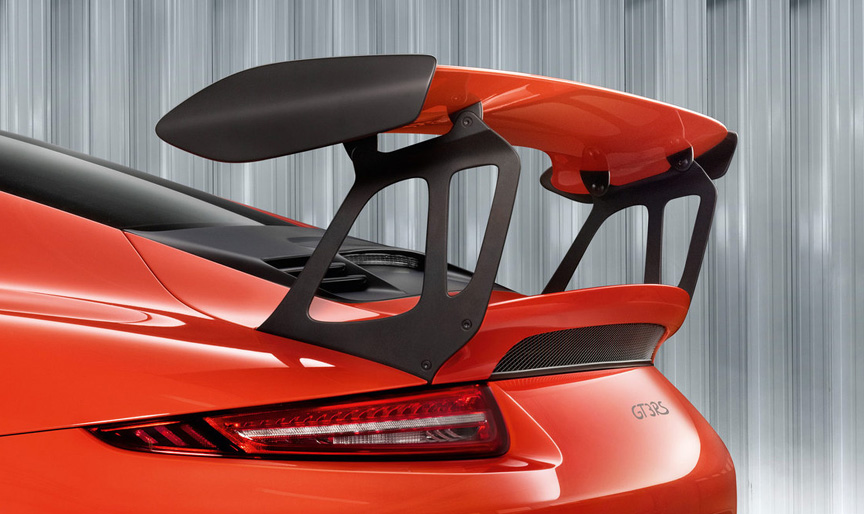
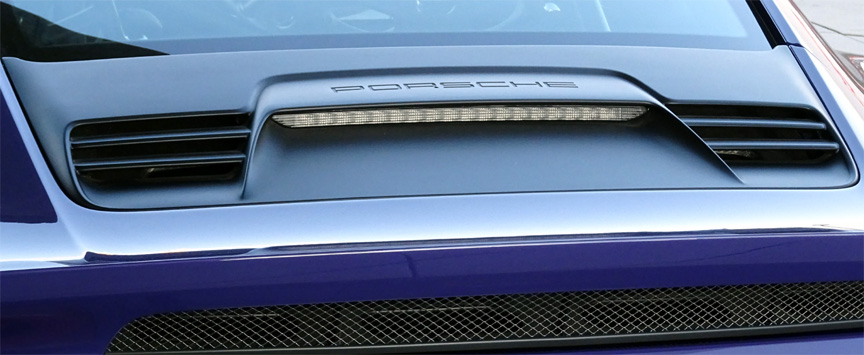
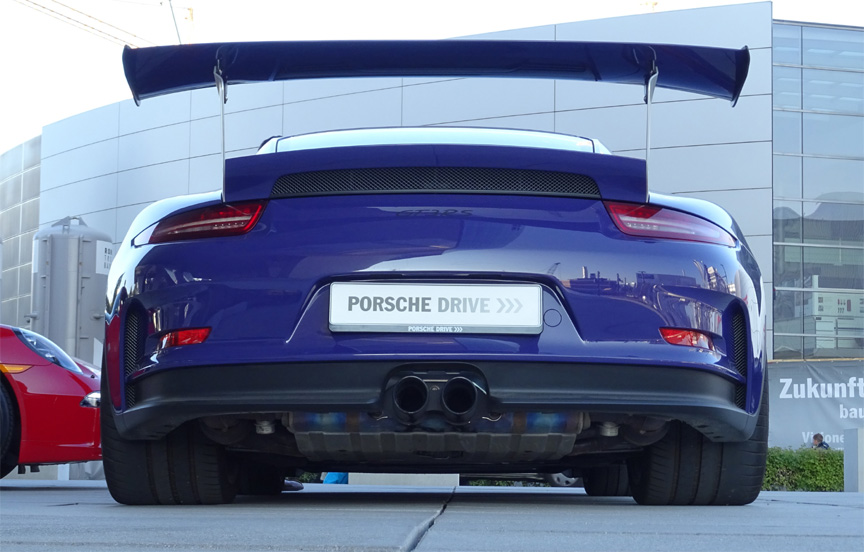


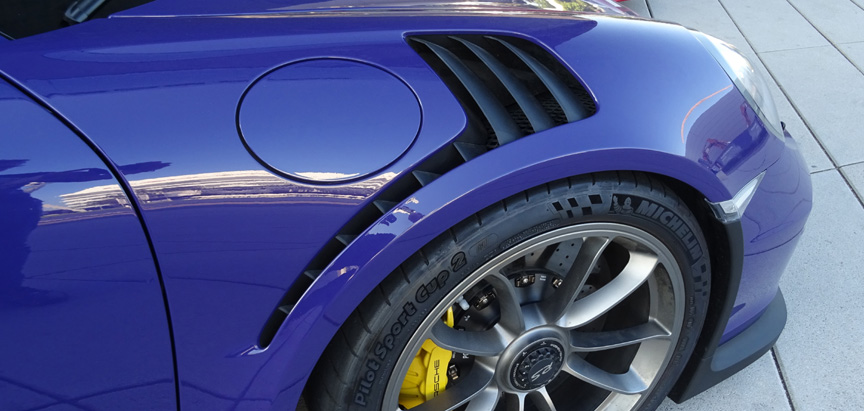

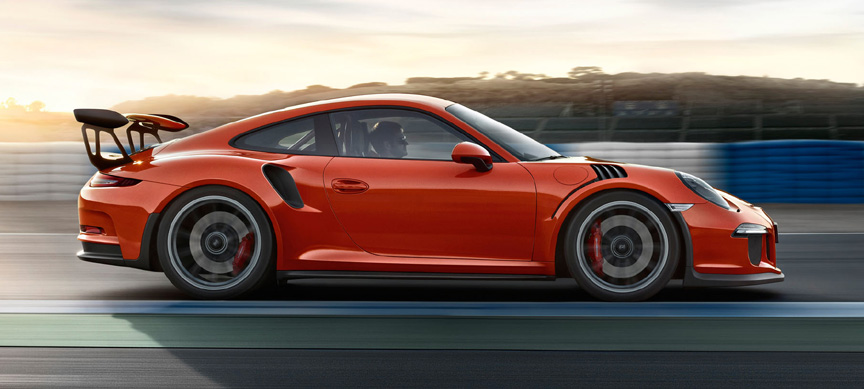
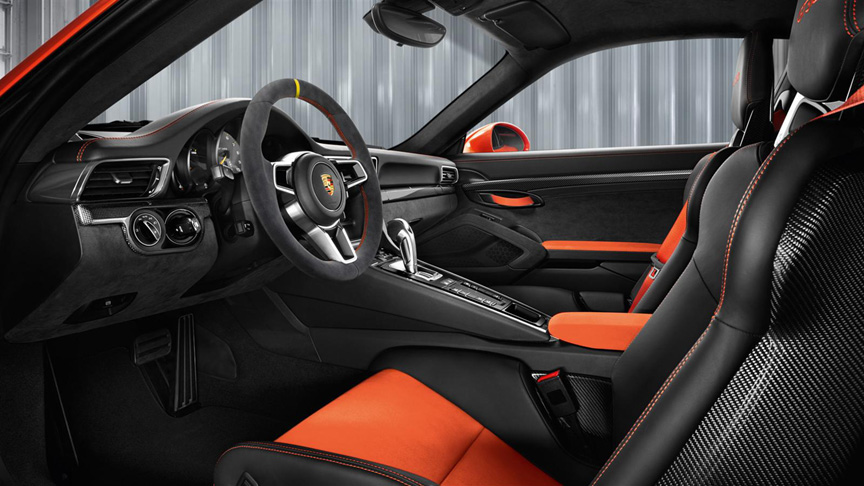
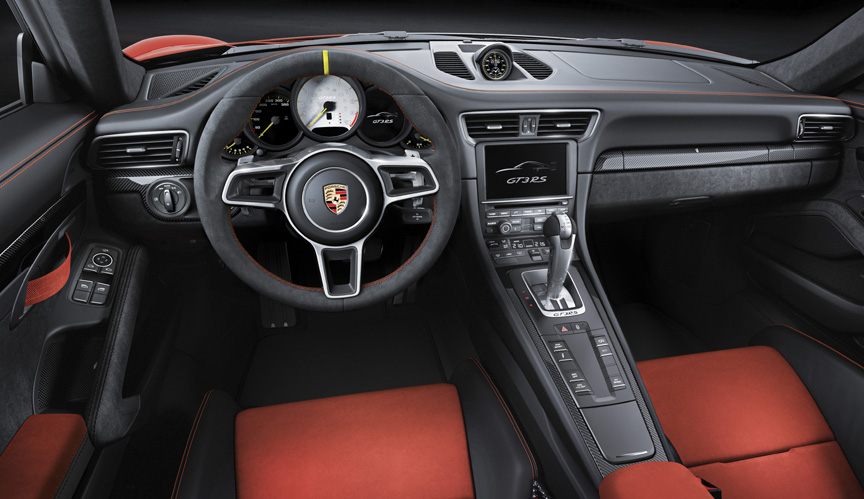
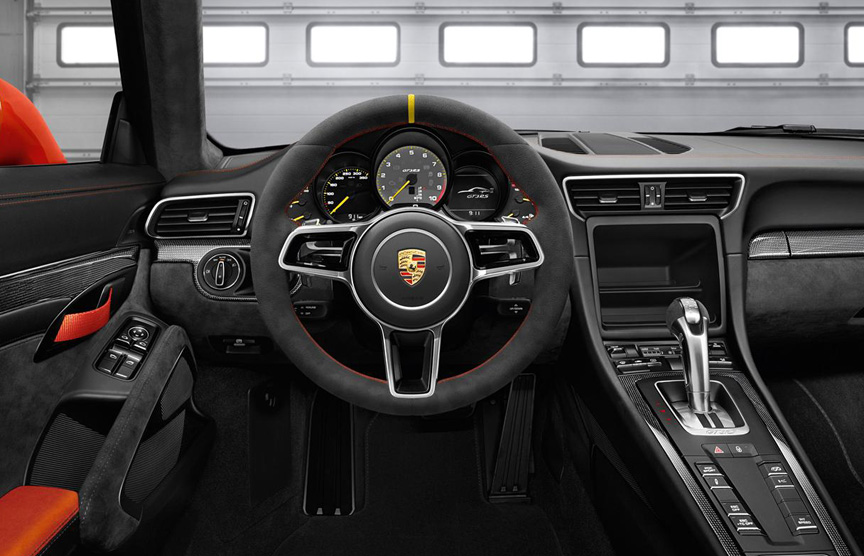
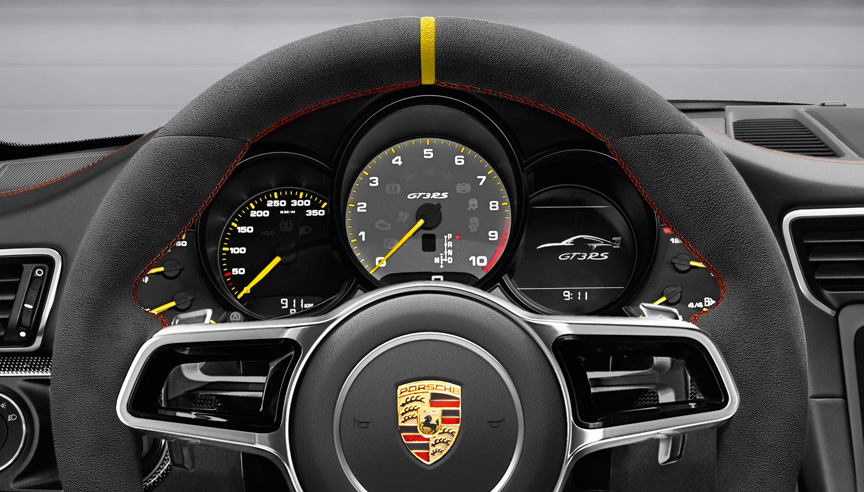
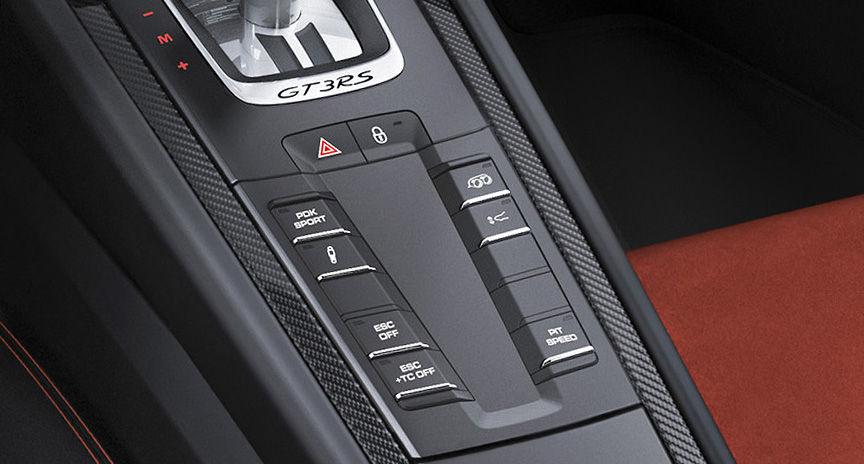
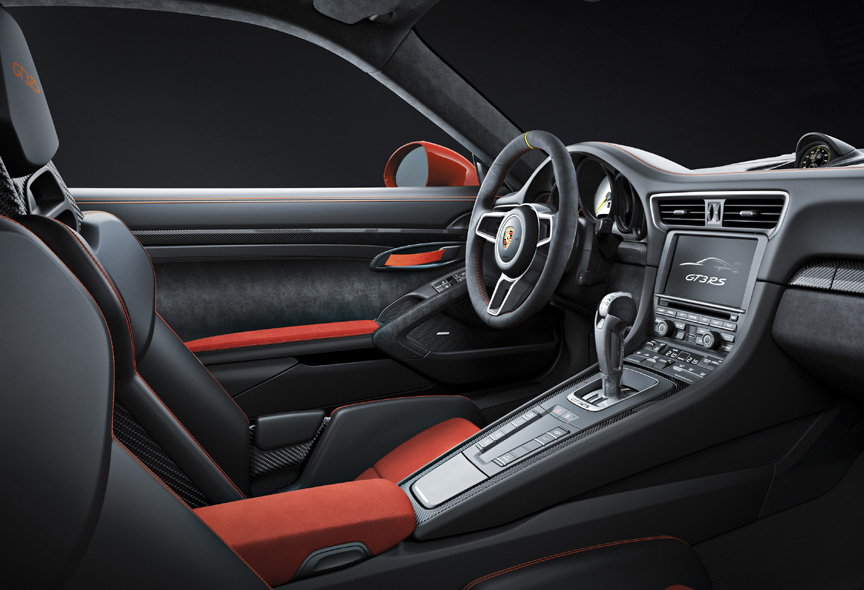
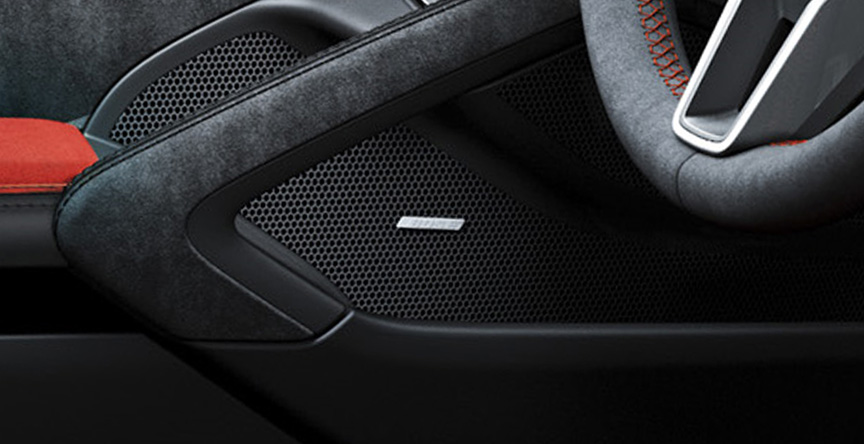
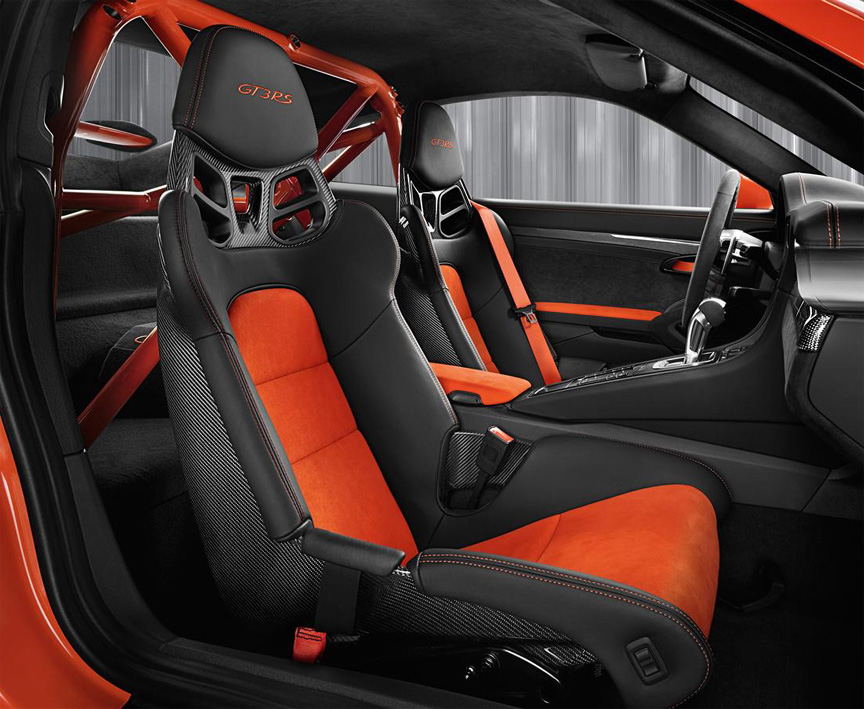
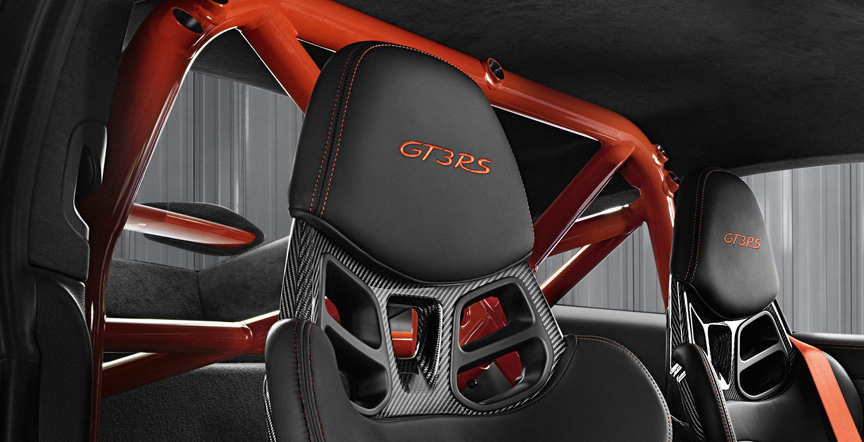
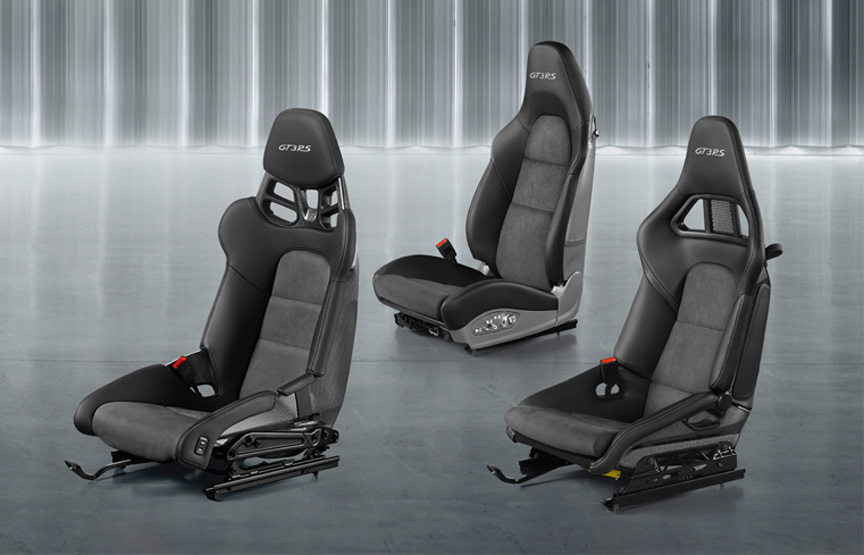
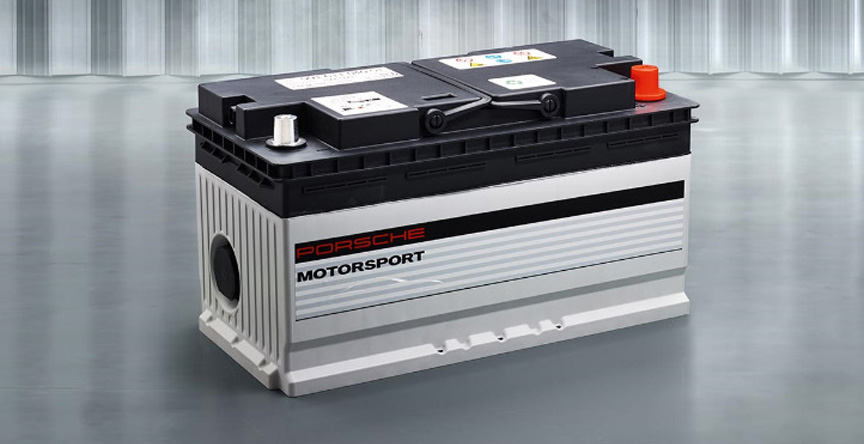
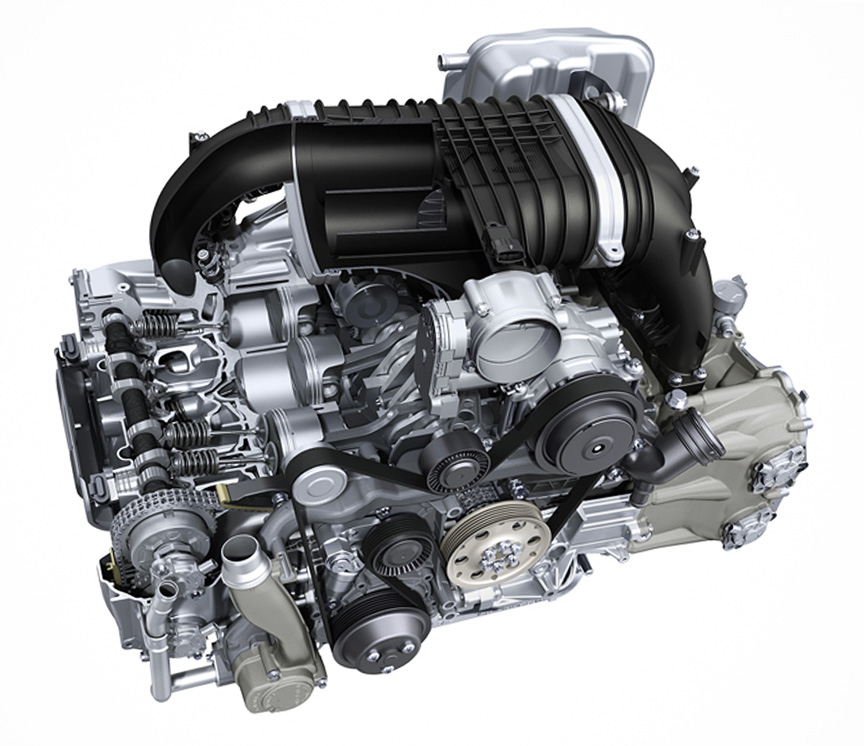
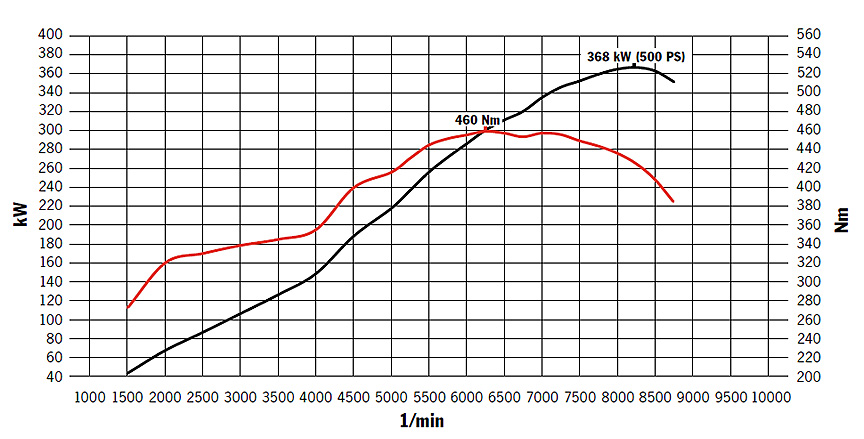
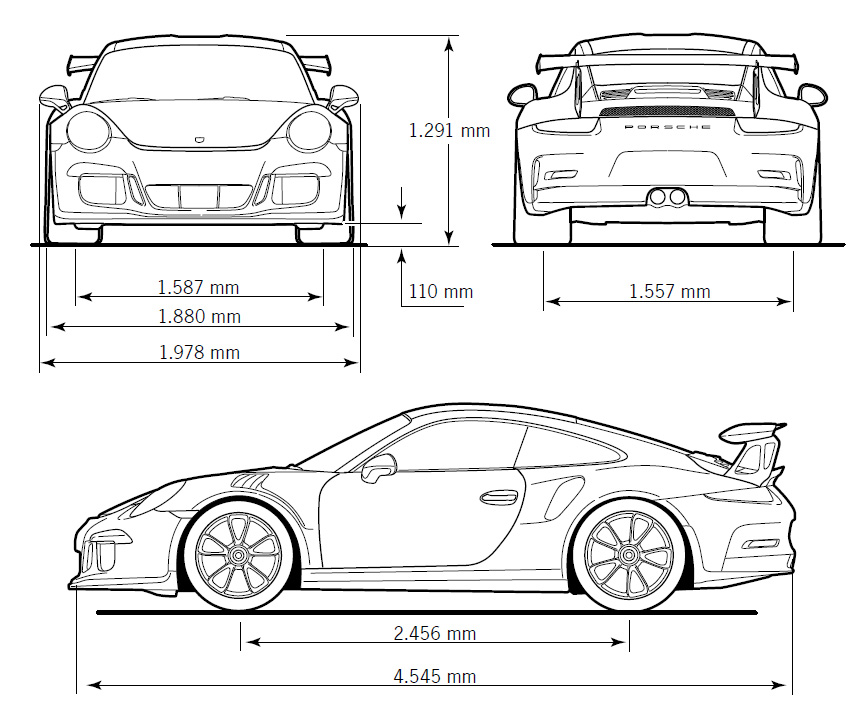
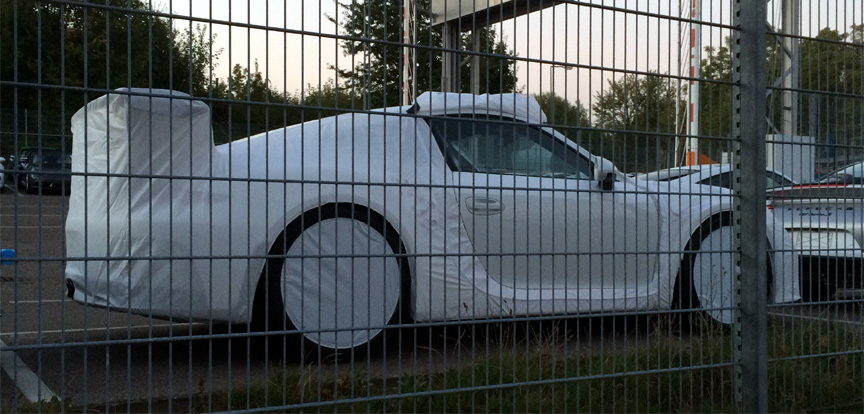
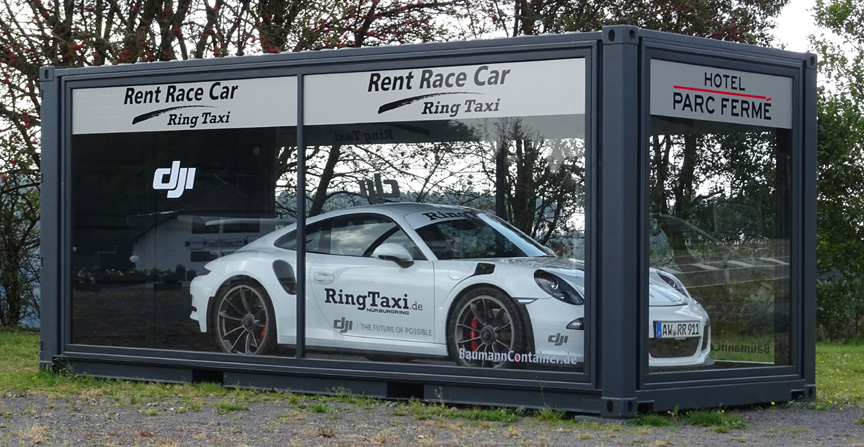
Lego-look wrap
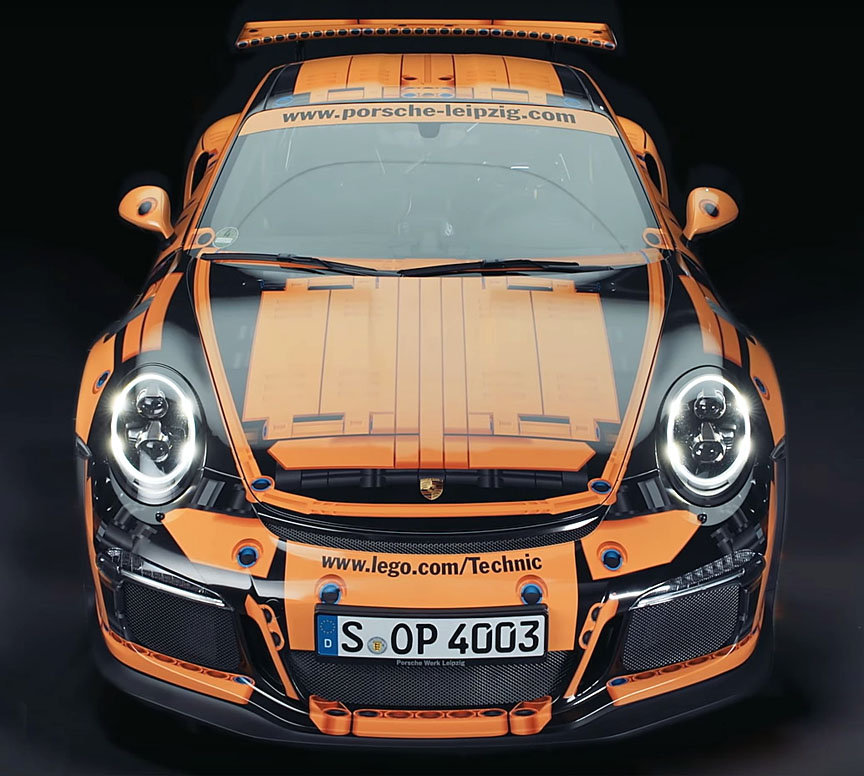
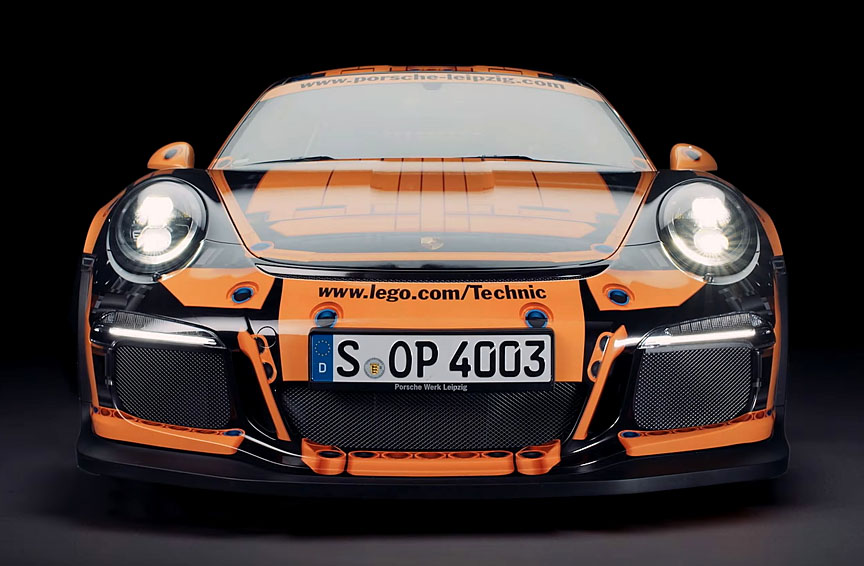


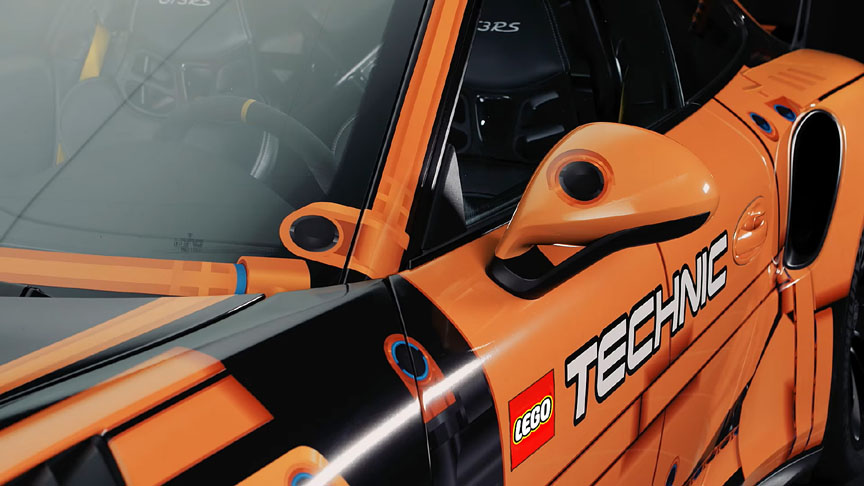
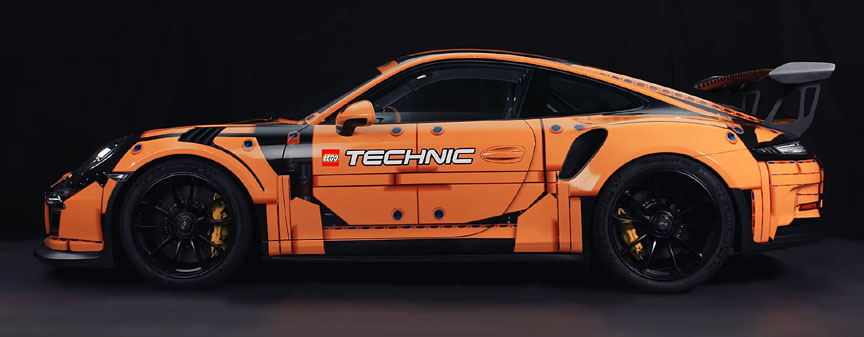
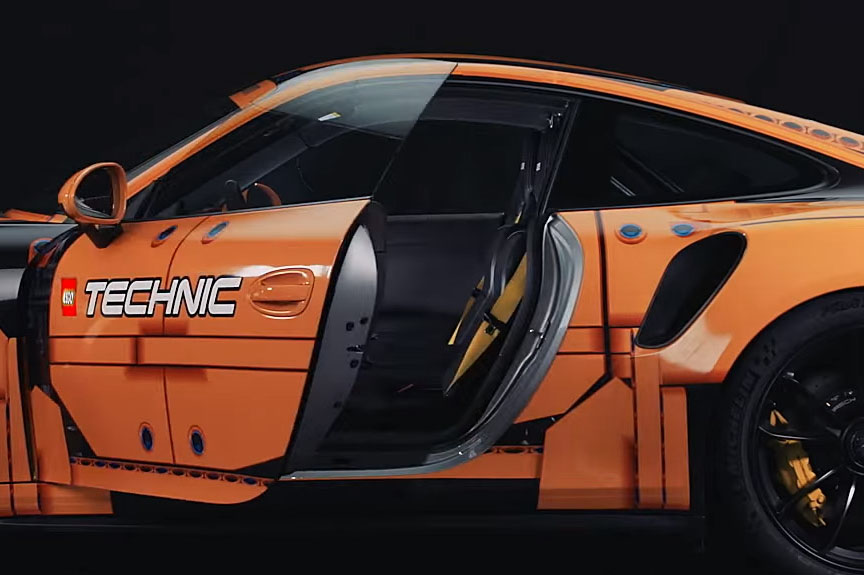
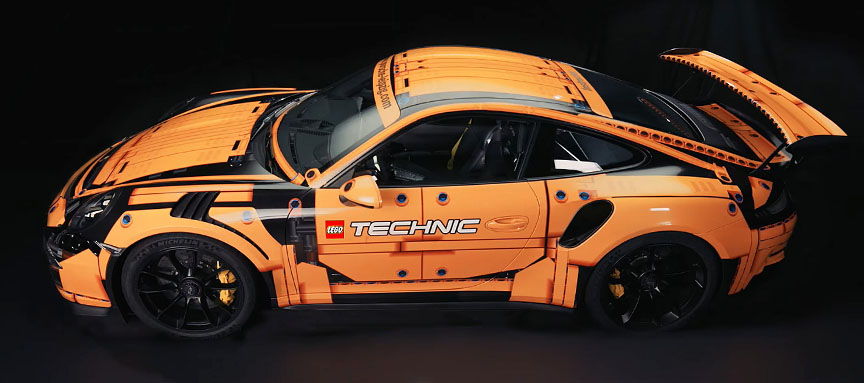
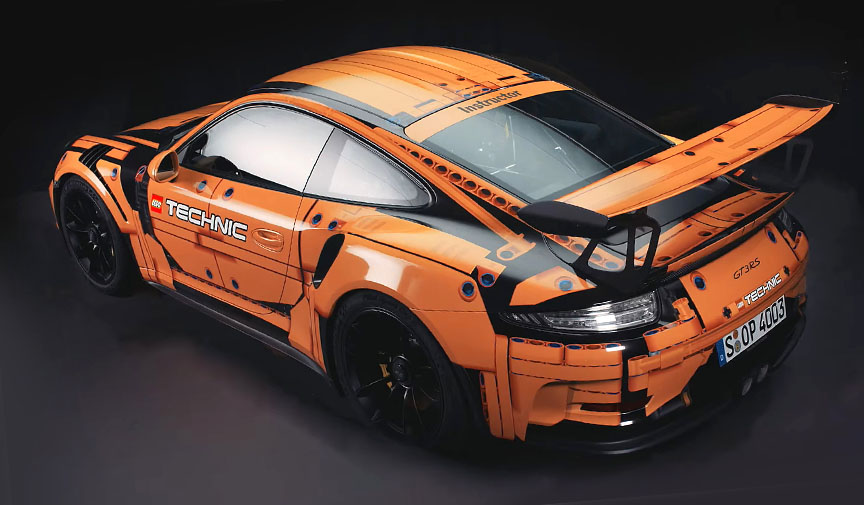
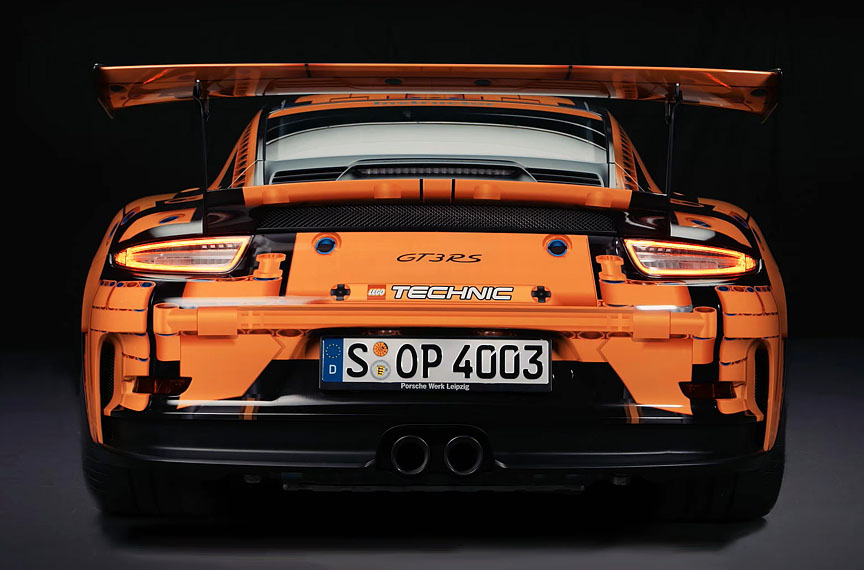
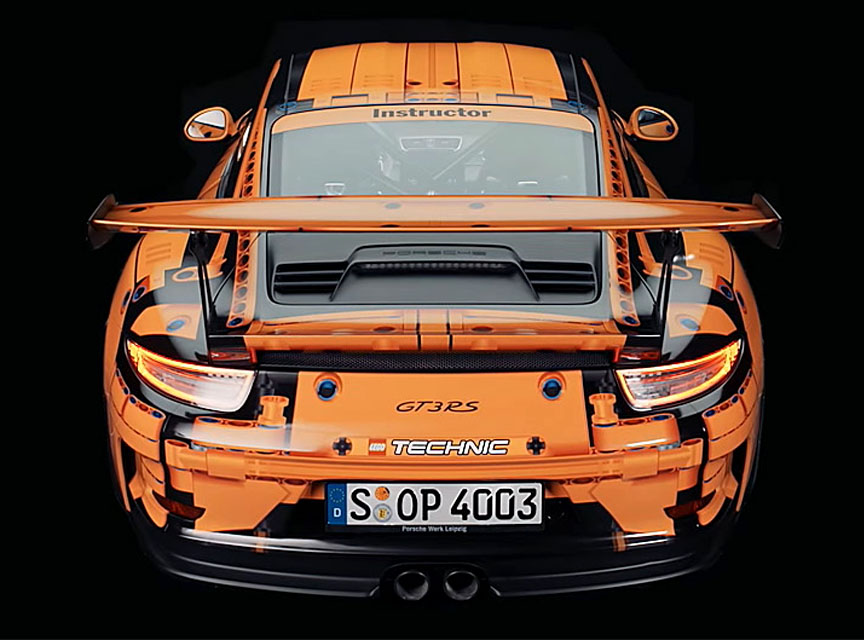
Pictures
The Video Reviews
Press Release
The new Porsche 911 GT3 RS breaks down the barrier between street-legal sports cars and race cars more than ever. It is equipped with the maximum degree of motorsport technology that is currently possible in a street-legal 911.
Extensive modifications to its drive system, aerodynamics and lightweight design enhance performance even more than in the 911 GT3. And the 911 GT3 RS – now in its fifth generation – achieves these gains despite having already set standards in its class on the circuit racetrack ever since making its debut. With a lap time of under seven minutes and 20 seconds, it sets a new standard and even surpasses the Carrera GT super sports car’s lap time of 2003.
Motorsport expertise is the reason for this superior performance. The Porsche 911 GT3 RS is powered by a four-litre six-cylinder engine with 500 hp (368 kW) of power and 460 Newton metres of torque, combined with a specially developed PDK transmission. The engine, which has the largest displacement and most power of any naturally aspirated engine with direct fuel injection in the 911 family, accelerates the high-performance sports car from zero to 100 km/h in 3.3 seconds and to 200 km/h in 10.9 seconds. Its NEDC combined fuel consumption is 12.7 l/100 km. Functions such as declutching by “paddle neutral” – which is comparable to pressing the clutch with a conventional manual transmission – and speed limiting by the Pit Speed button have been customised for motorsport use. On the one hand, they give the driver more freedom in terms of driving dynamics, and on the other hand they offer the driver more assistance when driving on a circuit racetrack.
Intelligent lightweight design: magnesium roof, carbon fibre wings and lids
The Porsche 911 GT3 RS is a masterpiece of intelligent lightweight design. Its roof is made of magnesium, the front wings, front lid and engine lid are made of carbon fibre, and other lightweight parts are made of alternative materials. This makes the RS model, which weighs 1,420 kg, around ten kilograms lighter than the 911 GT3. In addition, the lightweight roof lowers the sports car’s centre of gravity which improves its excellent lateral dynamics. The body comes from the 911 Turbo, and it signifies its status as nearly a race car driving machine with its RS-specific aerodynamic add-on parts. The front spoiler lip, which extends nearly to the road, and the large rear wing reinforce its dominant look.
A 30 centimetre wide recess extends centrally over the CRFP bonnet and the magnesium roof. This feature is a stylistic reference to the recess on the luggage compartment lid of the classic 911 models with air-cooled engines, and today it identifies the two largest lightweight components in the 911 GT3 RS. Another characteristic is the unique front wheel arch air vents that extend into the upper section of the wings – just as in purebred motorsport cars. They increase downforce at the front axle.
Rear-axle steering and the widest tyres of any 911
The chassis of the Porsche 911 GT3 RS has been tuned for maximum driving dynamics and precision. Rear-axle steering and Porsche Torque Vectoring Plus with fully variable rear axle differential lock increase agility and dynamics, and the wider front and rear track widths enable even better roll stability than in the 911 GT3. In addition, the 911 GT3 RS comes with the widest tyres of any 911 model as standard. This results in even more agile turn-in characteristics and even higher cornering speeds.
The interior design of the Porsche 911 GT3 RS with Alcantara elements is based on the current 911 GT3. The driver and front passenger sit in full bucket seats made of visible carbon, which originate from the 918 Spyder. Other standard features are the Club Sport Package with a bolted-on roll cage behind the front seats, preparation for a battery master switch, and separately provided six-point safety harness for the driver and fire extinguisher with mounting bracket. The optional Sport Chrono Package, which features an integrated timer, also includes the Porsche Track Precision app for a smartphone. The Track Precision app can be used to have lap times automatically measured via GPS, and to log data on a smartphone for many driving parameters such as vehicle speed, lateral acceleration as well as longitudinal acceleration and deceleration. It manages this data and lets the driver share and compare it with other drivers.


